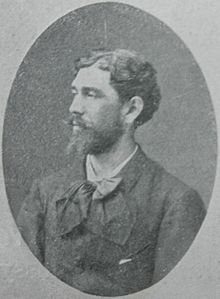Ion Mincu
This article needs additional citations for verification. (January 2021) |
Ion Mincu | |
|---|---|
 | |
| Born | 20 December 1852 |
| Died | 6 December 1912 |
| Nationality | Romanian |
| Alma mater | École des Beaux-Arts |
| Occupation | Architect |
| Buildings | Palace of Justice |
Ion Mincu (Romanian pronunciation: [iˈon ˈmiŋku]; 1852 in Focşani – 1912 in Bucharest) was an architect, engineer, professor and politician in Romania.
He promoted a Romanian style in architecture, by integrating in his works the specific style of traditional Romanian architecture. Mincu was the most important Romanian architect for Art Nouveau and Neo-Brâncovenesc architecture.[1] As a recognition to his importance in the Romanian school of architecture, since 1953, the Ion Mincu University of Architecture and Urbanism in Bucharest bears his name.
He was the teacher of Toma T. Socolescu, another remarkable Romanian architect.
From 1895 to 1899 he was member of the Parliament of Romania.
Biography
- 1863 - 1871 - studies at Unirea Highschool, in Focsani.
- 1871 - 1875 - studies at the National School of roads and bridges, in Bucharest, becoming an engineer.
- 1877 - 1884 - continues his studies in Paris, at "École des Beaux-Arts", becoming an architect.
- 1883 - is awarded by the Central Association of the French Architects.
- 1892 - 1912 - teaches architecture and becomes one of the founding members of the Architecture School of the Romanian Architects Association.
- 1896 - 1897 - Robescu House is built in Galati, Romania
- 1903 - 1912 - he is the president of the Romanian Architects Association
- 1895 - 1899 - deputy in the Parliament of Romania
References
- ^ "Cladiri in stilul Art Nouveau din Romania". March 6, 2018.
